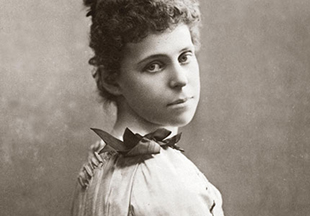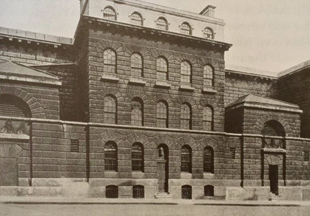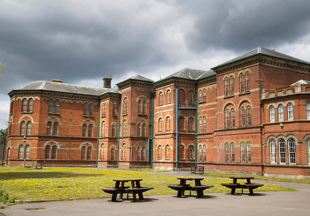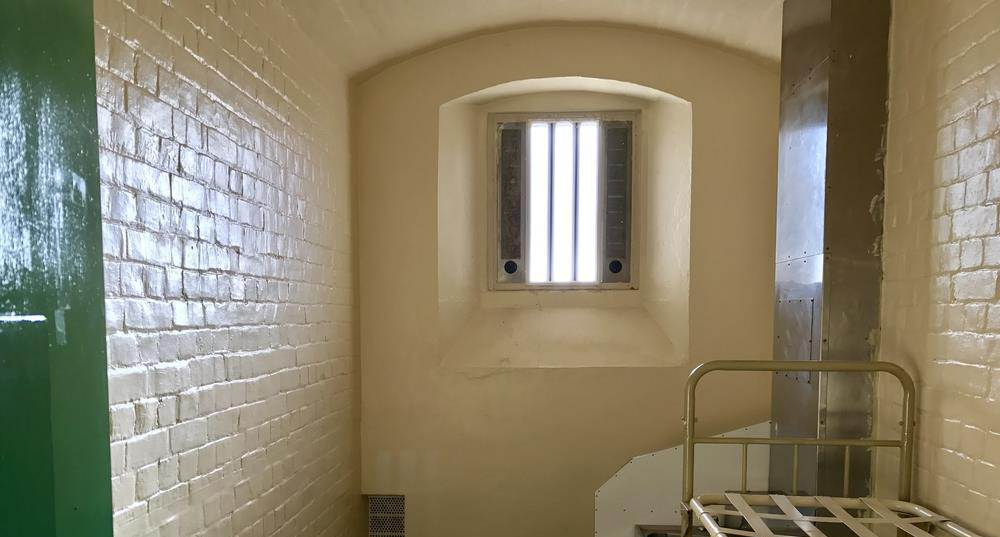Florence Maybrick
The story of Florence Maybrick's murder trial, conviction, and release, captivated her supporters and critics on both sides of the audience throughout her fifteen-year saga. American-born Florence and her cotton-broker husband charmed Liverpool society, but their marriage was not as problem-free as it appeared. Florence was accused of poisoning her husband, James Maybrick, who was 23 years her senior. After his sudden death, stories of mutual infidelities, betrayal and murder ran rampant.Florence's life began in Mobile, Alabama, as she was born to Carrie E Holbrook-Chandler and William George Chandler, a banker. Her father died, and her mother re-married to a German baron. During travels with her mother, Florence met her future husband, James, aboard a ship. Although it was looked upon as strange at the time, Florence spent much of her time aboard the ship alone with James. Most personal accounts of the trip coincide: by the end of the trip aboard the ship, Florence and James decided to marry. She was an eighteen-year-old Southern Belle, and he was forty-two.
Florence was married to James in a ceremony at St. James's Church, in London. Immediately after their wedding, they arrived to live in Battlecrease House, in Aigburth, near Liverpool. This residence was to be the scene for future marital strife, and eventually, tragedy. Florence was known to indulge in expensive luxuries and parties, and loved to be the centre of attention. Her tastes were lavish, and we know that her husband eventually had to admit to her that they were in financial trouble and he attempted to put her on a budget. Florence refused to control her spending habits, however, and began to borrow against the land she expected to inherit in America, and against her jewelry.
Despite her inability to control her spending, Florence cannot hold the entire blame for their marital troubles. As a cotton broker, James frequently travelled to America on business trips, sometimes several times per year. Florence eventually discovered that James had been keeping a mistress, who had given birth to five of James' children, and to whom he had been paying support of £100 annually. Florence suspected and knew of numerous other mistresses, as well.
In addition to infidelity, James suffered from a drug addiction. Arsenic was a popular drug with men during James' era, and James was no exception. After his death, local druggists told investigators that they had personal sold James large quantities of arsenic. This is key information that would come into play during Florence's murder trial.
Perhaps it is this knowledge of James' mistresses and his drug addiction that drove Florence to her own infidelities. Florence had an extramarital affair with a younger cotton broker, Alfred Brierley, and with James' brother, Edwin. She was not discreet about her adulterous relationships, and her affair with Alfred was discovered by James, who threatened divorce.
After James' illness and death, his family became suspicious of Florence and demanded a police investigation into her possible involvement. She was soon charged with murdering her late husband by means of arsenic poisoning, even though medical examiners reported that the levels of arsenic in his body were not fatal. There were large amounts of arsenic found in Battlecrease House, but believers in Florence's innocence believed that it was due to James' drug addiction, not to Florence's guilt as a murderer.
Florence was sentenced to death, but her sentence was commuted. Instead, she was given a life sentence, of which she served fourteen years. Because of her marriage to James, she lost her American citizenship, but she still returned to the US. She died a sad death, alone, penniless, and living in squalid conditions in Connecticut. She never saw her children again.
Was Florence guilty or a victim of circumstance? Supporters of her innocence believe that she did not have motive to kill James. Instead, they believe that he was worth more financially to her alive than dead, since his will only allowed for meagre support of her and the children. Her critics, however, claim that she was a woman scorned, and that James' infidelities and drug addiction provided both motive and opportunity.
Florence's story, while interesting in its own right, deserves special attention because of James Maybrick's connection to the Jack the Ripper case. James is considered by many "ripperologists" to be a potential suspect. In addition, some people believe that Florence knew about James' involvement in the murders and that this provided additional motive for his murders. We may never know the truth.






Comments
Joseph Friscia
11 Feb 2019 03:12Yes I strongly know that James Maybrick was Jack The Ripper, his brother Michael also had a part of being Jack The Ripper.
Susan Simpson
29 Mar 2021 01:10I've noticed Michael Maybrick's name is conspicuously absent from suspects listed by the establishment. He committed all the notorious White Chapel murders, and then some, and wrote the Diary of Jack the Ripper, which he planted in his brother's (James Maybrick) house, to frame him. He colluded with Scotland Yard and all the cops, who were all Masons, and at all costs, protected his identity, to save face for the British empire. Michael framed Florence for his brother's murder. All the murders mysteriously stopped when she went to jail. He disappeared to the Isle of Wight, and his glorious, famous singing career was blotted out, as was his name, from all British history.
Drema Stringer
05 Jul 2022 02:26I wonder what happened to Alfred Brierley, Florence’s lover at the time of the murder of James. Does anyone have anything?